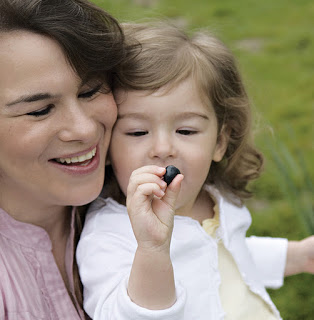Meet a New Belly Busting Phyto…PLUS: NEW Supermarket Guru Video!
Interested in a more diminutive belly? You’re not alone. Growing middles are a body bane for many dieters, and it’s no coincidence. There’s a reason many of us battle belly bulge.
As we age, we naturally lose muscle, which results in more body fat, and body fat actually shifts from other parts of the body, like the arms or legs, to the middle. It’s particularly true for women, especially after menopause, due to a natural decrease in estrogen.
 Belly fat isn’t just discouraging because of how it looks. Research has shown that as fat in our waists grows, so does our risk of cardiovascular disease, diabetes, breast cancer, colorectal cancer and stroke. Weight specifically carried in the middle can also be a factor in premature death, according to the Mayo Clinic.
Belly fat isn’t just discouraging because of how it looks. Research has shown that as fat in our waists grows, so does our risk of cardiovascular disease, diabetes, breast cancer, colorectal cancer and stroke. Weight specifically carried in the middle can also be a factor in premature death, according to the Mayo Clinic.
The reason is “visceral fat” – fat that resides deep within our bodies and surrounds our organs. The cells of this deep, internal fat release inflammatory compounds that can affect blood pressure and cholesterol levels, lead to insulin resistance, and be a factor in causing some cancers. Having visceral fat is an indicator that you may be at risk for these and other diseases.
Are we doomed to larger bellies and a higher risk of illness as we age? No way. As stubborn as belly fat can seem, it is not resistant to diet and exercise. Following basic measures to lose weight will whittle belly fat just as it will fat on any part of the body. In fact, some nutrition experts say belly fat is first to go when you start a diet and exercise program.
The Wild Blueberry Effect
If you are ready to tackle that muffin top, making smart food choices may translate to your abs and reduce your chances of illness. According to WebMD, new research indicates that making blueberries part of your diet may correlate to less abdominal fat. If your genetic profile (or tape measure) indicates you have or are at risk of having visceral fat, eating wild blueberries is a perfectly achievable (and perfectly delicious) line of defense.
The Benefits of Blueberries: Learn more about why consumers and experts alike are embracing the blueberry.
While this promising connection between blueberries and belly fat is the result of preliminary research, we already know that the wild blueberry’s health advantages can play a role in the diseases that are exacerbated by belly weight, including heart disease and diabetes. Phytonutrients, which are responsible for the dark pigment in fruits like blueberries, are uniquely helpful in lowering the risk of heart disease and type-2 diabetes, and maintaining glucose control. And of course, the nutrition-to-calorie ratio for this berry is huge. The recommended one-half cup per day provides just 42 calories along with its big health benefits, making it ideal food for belly-busting efforts.
Pterostilbene – A New Phyto to Know
Supermarket Guru Phil Lempert (see video above) reports that USDA research into a phytonutirients reveals a distinctive benefit to the blueberry – one that might shed light on its extreme health benefits. Blueberries, the report states, have high levels of pterostilbene, a phytonutrient which can help reverse the effects of heart disease and type-2 diabetes.
If you follow health and nutrition, this compound, pronounced TER-o-STIL-i-been, is one to watch. This nutritional compound is said to show cancer fighting properties, breast cancer fighting properties, and the potential to reverse cognitive impairment, among other health benefits. Pterostilbene is related to the famed resveratrol, and like resveratrol is also known for its existence in blueberries and grapes. (You can read more in this article from the USDA about pterostilbene’s healthy potential.)
When a fruit is truly super, like blueberries, which are loaded with advantageous phytonutrients, they win our trust. Lempert, an expert in predicting consumer views behavior lauds the fabulous deep blue fruit, and reports that true superfruits, like wild blueberries, are getting the thumbs up with even today’s jaded consumer.
But if your goal is a little belly, why go for a little fruit? Here’s why: phytonutients reside in the deep blue skin of the fruit, and the wild blueberry, due its small size, has a higher skin-to-pulp ratio than the larger, cultivated berry, which means you are getting the most intense nutritional benefit per serving possible. Go small! There are plenty of health benefits, and research is growing.
Do You Have Visceral Fat?
Check your BMI – While your BMI is a measurement of height and weight ratio, it doesn’t necessarily measure damaging belly fat. However, having a BMI that’s too high is an indicator that your weight can be detrimental to your health and increase your chances of life-threatening diseases.
Assess your shape – The better indicator of belly fat is whether you are an “apple” or a “pear”. If you are an “apple” – someone who has a wider waistline in relation to the rest of the body – it’s an indicator that you may be carrying visceral fat. Use the tape measure for a reality check – waist size in women should be under 35, and for men, under 40.
Know your levels (even if your thin) – Visceral fat is genetic, and you may have a tendency to have it even if you are not overweight. In fact, thin inactive people are more likely to store this internal fat. Know your cholesterol levels and blood sugar levels, first and foremost. Then reassess your eating and activity habits to counteract your genetic tendency.




